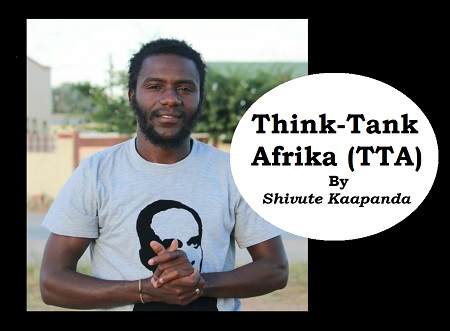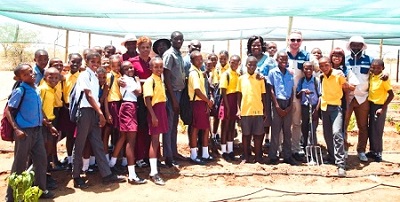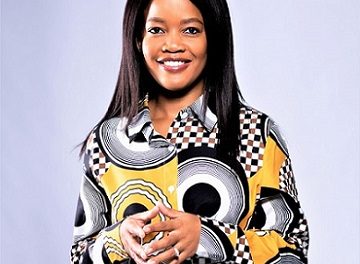
By Shivute Kaapanda [Think Tank Africa]
OMBALANTU, also spelled as ‘Ombaanhu’ by those who speak fluent
Oshimbaanhu, one of the-Oshiwambo dialects spoken by few in the west
Owamboland. Unique of their own are Aawambo that are Aambaanhu, their
history, revolution and tribal kingship.
The microscope of historical account is facing the Ombalanhu community
due to lack of research regarding the people in question. The youth of
Ombaanhu are at no interest knowing their history of ancestors
regarding kingship and the general evolution of Ombaanhu as a point of
learning; therefore a leftist youth, Shivute Kaapanda of Eyanda
village, in Ombalanhu, is hereby giving a historical narrative of Ombalanhu
based on the account if historical facts:
As oral history can recall from the recent generation, the Aambalanhu
people are part of Aawambo tribe who originally came from the great
lakes (Omatale Omanene yaNausila) of Kenya. Before the formation of
kingdoms and clans (National Archives), it’s said that Amushila waNehau
lyaKalimba led Aambalanhu from the great lake. He was not a king nor
was he from a particular clan. When the formation of clans took stage
in Owambo people, Aakwaghwiyo clan became the royal clan of Ombaanhu
by that time because a man from Nghumbi royal clan, a royal clan from
which Aakwanghwiyo clan originated from, which was a man known as Kamhaku
KaHuhwa, who was said to have become the first king of Ombalanhu, was from. So
thats where ombaanhu kingship is said to be started. The following is
the sequence of Ombalanhu kings is:
King Kamhaku kaHuhwa followed by Avula ya Epohe, who was followed by
Amuheli waKalipi, followed by Ishitile yaUkahona, followed by Eita
yaAitewa, followed by Eelu ya Elaa, who was then followed by Avula
yaAlweendo. All these kings are said to belong to
Aakwanghwiyo/Aakwanambwa clan and they used to live at the palace
designated for the Ombalanhu kingship in Ohamwaala village near Outapi
town.
According to “Ehistori lj’Ombalantu” a manuscript written by a
Finnish missionary named Kalle Hilmanen the people of Ombalanhu were
called “Aantu yaNakatati” (people of the bow) by Aakwaluudhi and
Aangandjera people and other neighbouring kingdoms. After the killing of the
dictator King Kamhaku, by then everybody could take up arms
(bows) without the permission of a king since all other kings who
led after King Kamhaku were just declared as tribe leaders, not kings.
But this only came after the mysterious death of King Avula yaAlweendo
who, in the year estimated 1913-1914, went with the Germans to Outjo supposedly to
sign a protection treaty with the Germans. He was never seen ever
since and he was presumed as having disappeared mysteriously. Estimated
years 1915-1916 Ombalanhu was without a king and in 1917 the royal clan
installed Ishitile yaShiweva as a king.
However there was a constant
fear of mysterious disappearance born of king yaAvula incident,
therefore the Ombalanhu people used the title ‘leader’ and not a king
as the overall ruler of the kingdom.
According to writer D.L. Amutenya’s Article, Estimated 1918, an
Afrikaner (Boer) by the name “Cocky” Hahn, a Commissioner of Colonial
South African government arrived in Ombalanhu from Ondonga via Uukwambi
palace. Hahn was nicknamed “Shongola” (Whipman) by Aambalanhu because
he liked whipping black people (black brutality). Shongola first arrived
in Okalwii village west of present-day Onambelela.
Estimated 1917, the Ombalanhu ruler was King Ishitile yaShiweva of
Aakwanghwiyo clan. Popularly known as “Mbwada”, King Ishitile was
chosen after the fear and uncertainty that had followed the mysterious
disappearance of King Avula ya Aweendo by the Germans (Germans owe us)
and the brutal killing of King Mandume ya Ndemufayo of Oukwanyama
Kingdom. Mbwada was a very interesting ruler and a man of few words.
The most regular answer he gave at any question posed to him was
“Okalunga” meaning “it is god”. He is said to be very innovative and
secretive, loved the royal house and he wanted to protect it from the
influence of white people. After the whites started to engage the
Ombaanhu masses, Mbwada expanded his regular answer adding “Noonyoko”
so the regular answer became “Okalunga Noonyoko” meaning ” It is god
and your mothers”.
The kingship of Aawambo tribes follows maternal lineage and not the
paternal lineage. It’s said that King Kamhaku had a brother called
Naunyango waHuhwa but he was left-handed and could not be installed as
a king in accordance with Oshiwambo traditions. The royal clan
therefore installed Avula Epohe who was a half-brother to king Kamhaku
whose mother was Qeen Naitembu, who was named after a village in
Ombaanhu, a village called Onaitembu in Outapi constituency.
I would like to make it crystal clear here that when those who speak
from far refer to Ombalanhu as with kingless history while without
proper knowledge may be marked wrong and be ridiculed for lack of
facts and history of Ombalanhu.
All Aawambo tribes had kings, who had their roots in the Nkumbi royal
clan. Aandonga yaNangolo dhaAmtenya, Aakwanyama yaMandume, Aakwambi
yaAshipala shaKwedhi, Aambaanhu yaKamhaku kaHuhwa, Aakwaluudhi
yaNambula yaMukatha, Aangandjera yaKale kaAmadhila, Aambandja AND the
territory of the fugitives in the west of Owamboland called
Uukolonkadhi, where no king ever ruled.
THE OMBALANHU KINGDOM STORY HAS BEEN HIGHLY IGNORED BY NAMIBIAN
POLITICIANS UP TO DATE.
References:
National Archives, Ehistori lj’Ombalantu, The people’s Republic of Ombalantu.
ARTICLE BY; Shivute Kaapanda
A village writer
EYANDA VILLAGE(+264814209127)







